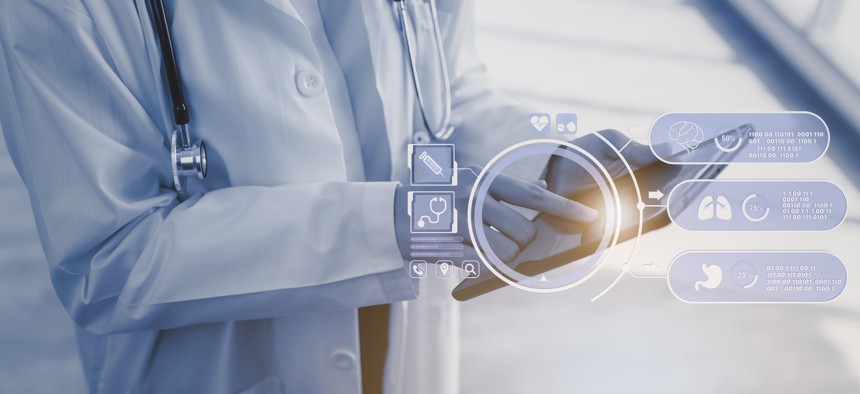Treating public health disconnects with interoperable data

Danai Jetawattana/Getty Images
Standardized state and local health data supports disease surveillance and will allow a quick response to health emergencies.
Public health runs on data, and so the Centers for Disease Control and Prevention is pushing for nationwide public health data interoperability.
Every state and local public health agency has its own data system, and more often than not, those systems cannot communicate with each other, said Eddie Ades, executive advisor at Booz Allen Hamilton. Further complicating the matter is how states differ in collecting and defining data points, which could prevent an effective public health response to emergencies, he added.
“The workforce both at CDC and … the states have to be ready to respond to any and all threats,” Ades said. To do that, public health data must be interoperable at the state, local and federal level to enable streamlined data collection and surveillance capabilities.
For instance, the pandemic laid bare the country’s outdated and uncoordinated public health systems, leaving governments scrambling to appropriately deploy test sites, vaccines and other crucial resources. However, a harmonious public health system will provide officials with the data they need to distribute resources and guide public health policy more efficiently, Ades said.
That’s why data interoperability is one of CDC’s priorities.
The agency’s “game plan” is to build a data system that supports a limited number of platforms that states can use to share data with the CDC, Ades said. The CDC would provide funding and technical assistance to participating state governments for system modernization, and in return, states would provide public health data. With that data, the CDC could offer improved data analytics for more efficient public health efforts, he said.
Working with the CDC, state and local governments would have to define the minimal data points necessary as well as establish data standards and frameworks for a successful project, he said.
But insufficient public health data reporting remains an issue. For instance, the CDC has raised concerns over the lack of data on COVID-19 vaccines, Reuters reported late last month.
“There’s a drive to get that data, but sometimes the states aren’t reporting it. Sometimes people aren’t getting the shots,” Ades said. Information gaps make it harder for officials to determine vaccine effectiveness, especially for older or immunocompromised individuals, he added.
Improved data collection could help public health officials better allocate vaccine resources if, for instance, data shows a certain age group is less or more susceptible to sickness, Ades said.
One way governments can support their state and local health agencies’ data missions is to sharpen communication targeting constituents to help them better understand the functionality of the different COVID-19 vaccines, he said. For example, a booster shot advertisement should clarify that it protects against the latest coronavirus strain so residents realize previous vaccines may be ineffective.
With clearer messaging, more individuals could be incentivized to receive vaccinations, resulting in more data for government, Ades said.
“At the end of the day, it's important to understand that it's all about the states,” he said. “The states have to share their science and data faster… and CDC need[s] to be able to translate that science into practice [and] share that data back to the states as fast as possible.”
NEXT STORY: ChatGPT Could Make Phishing More Sophisticated






